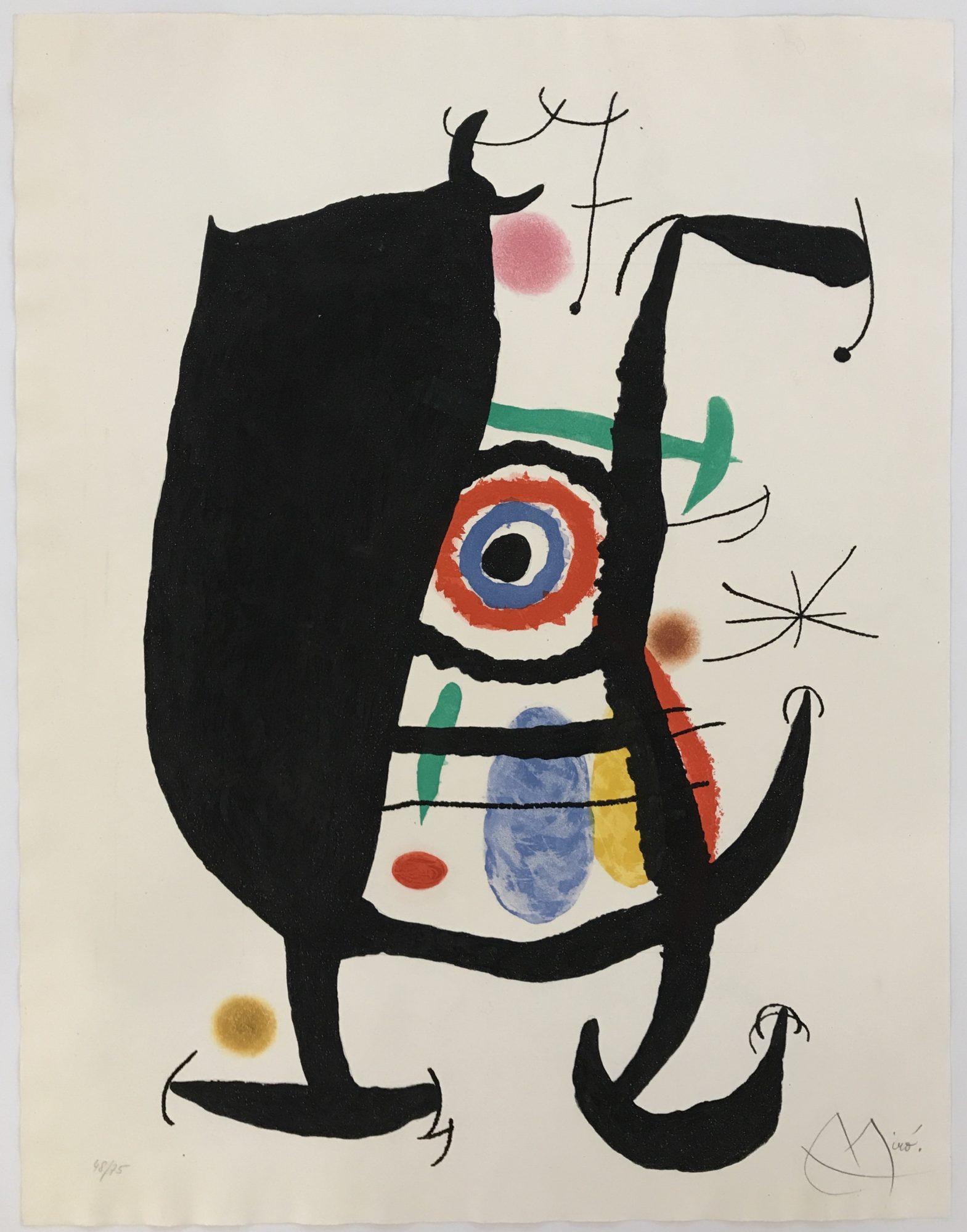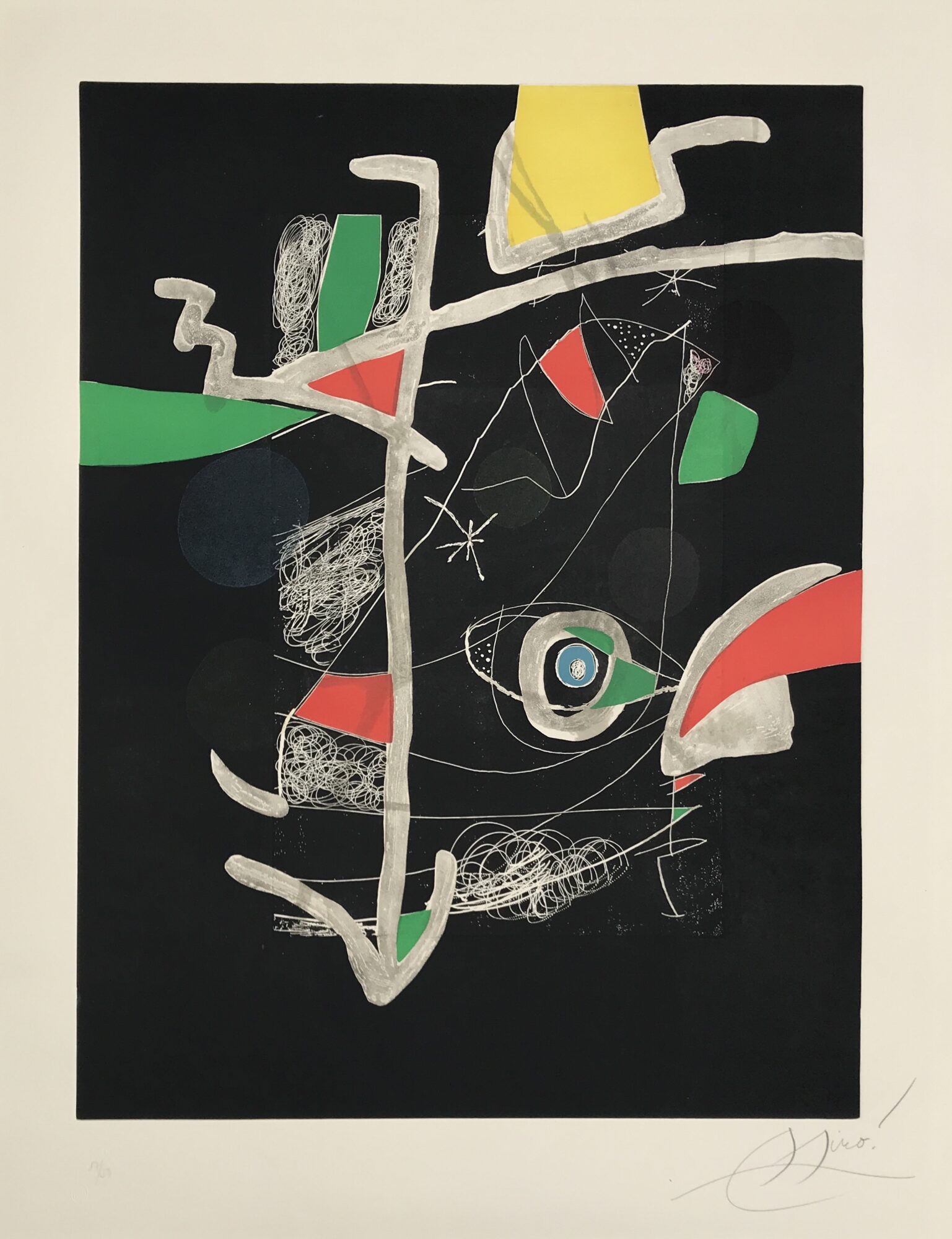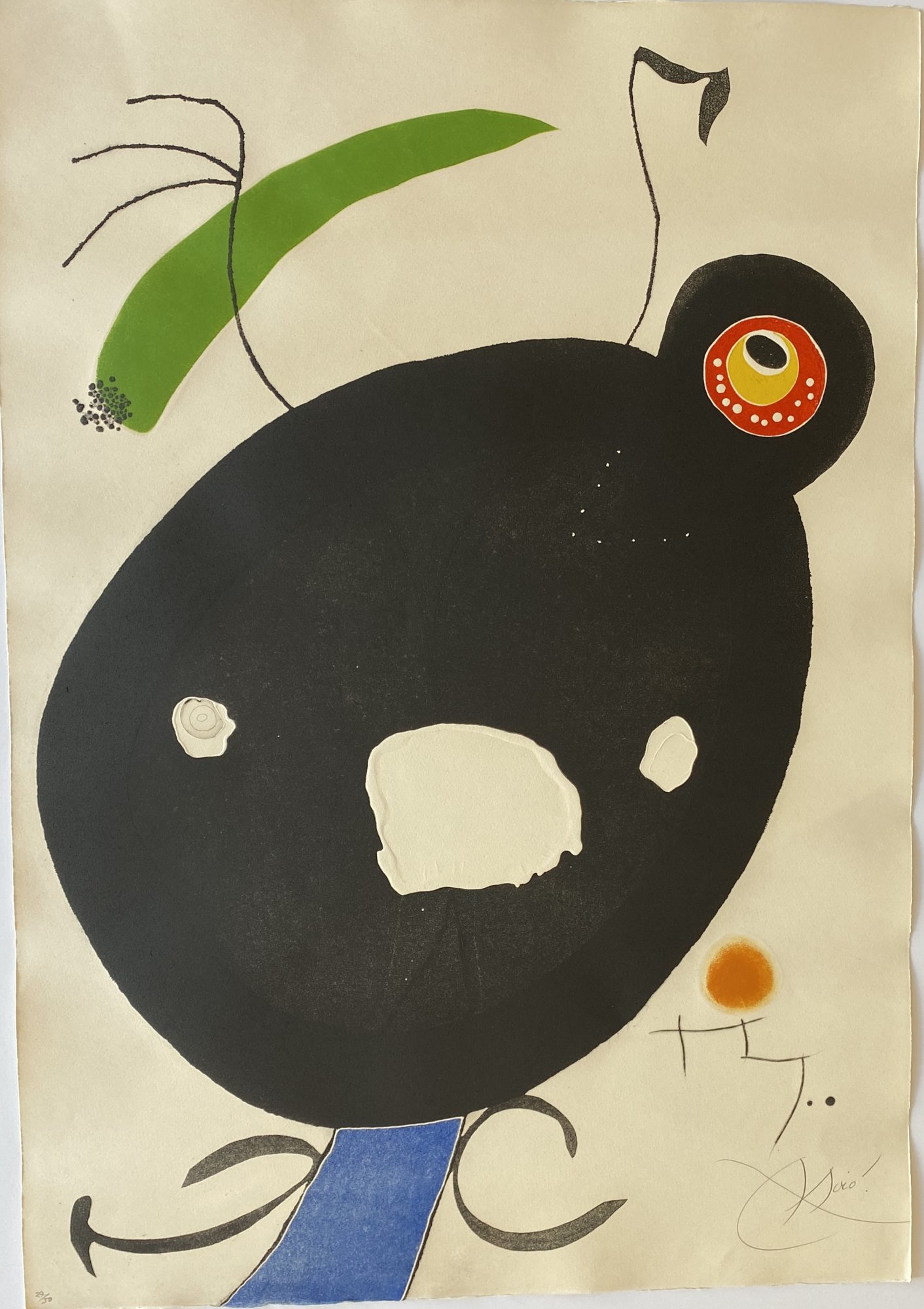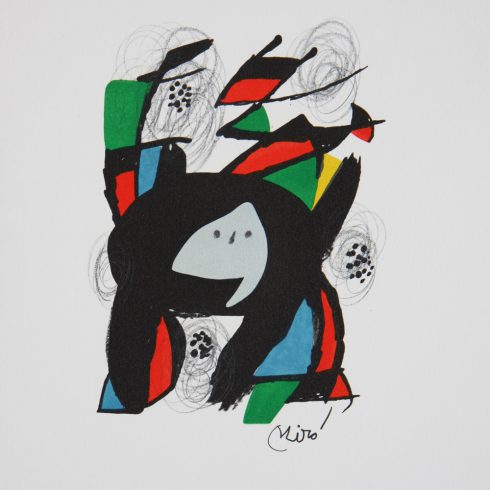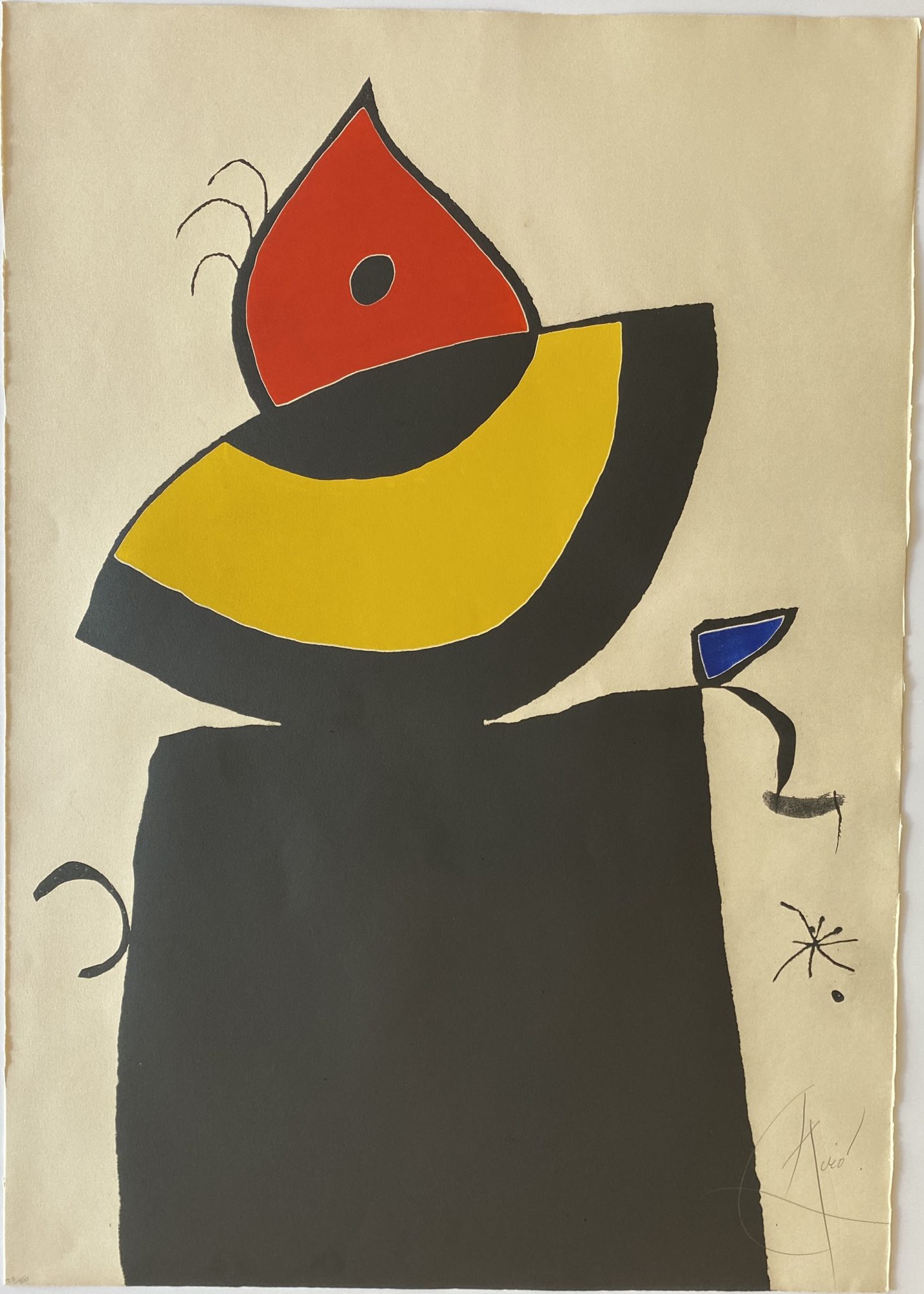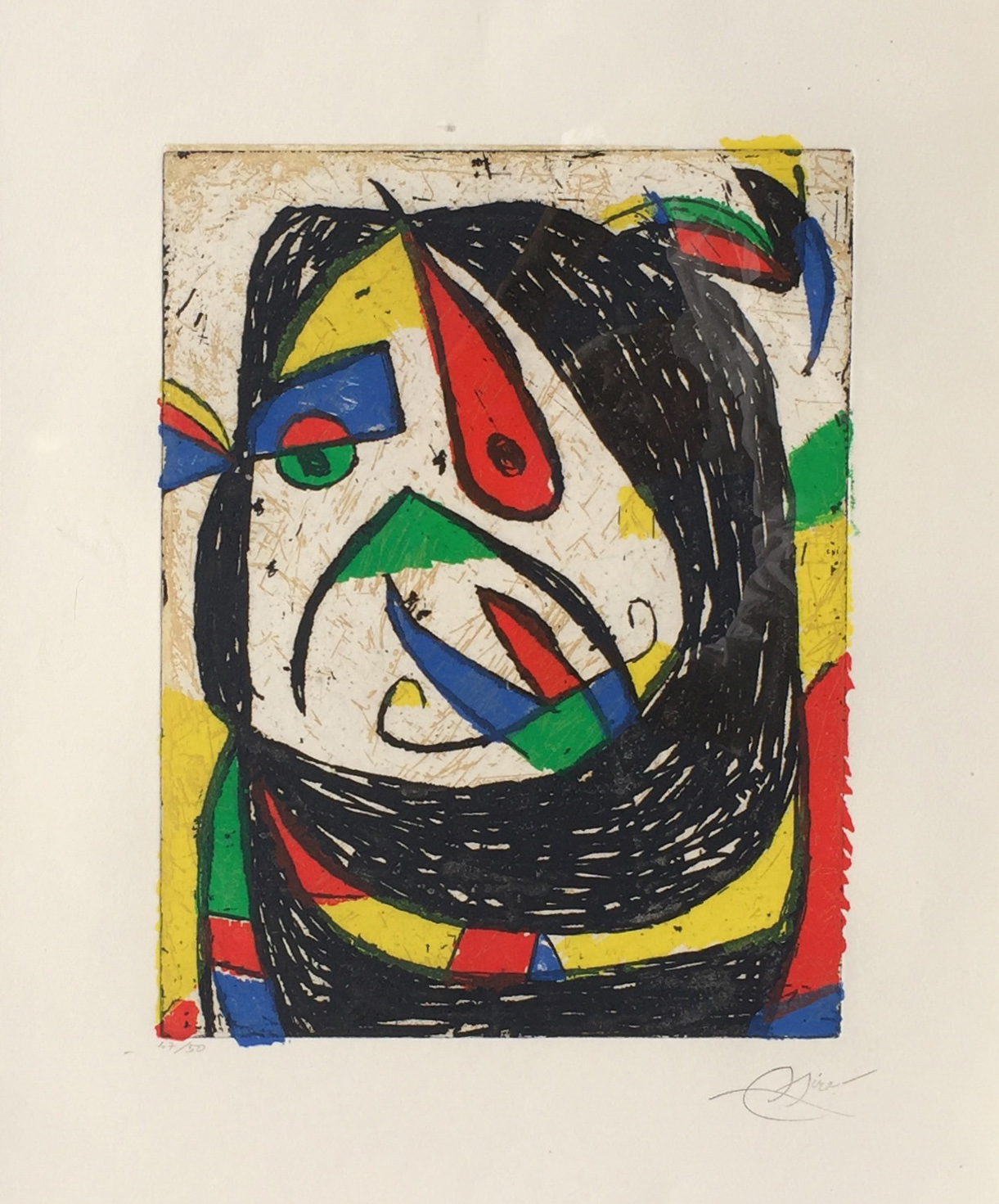L’Invention du Regard
L’Invention du Regard, 1970 by Joan Miro is an Aquatint print with Carborundum signed in the lower right and numbered in the lower left. This print was published by Maeght, Paris and printed by Arte Adrien Maeght, Paris. Dupin 537.
Joan Miró was a widely considered one of the leading Surrealists, although he was never officially part of the group. He pioneered a wandering linear style of Automatism — a method of “random” drawing that attempted to express the inner workings of the human psyche. Miró rejected the constraints of traditional paintings by creating works “conceived with fire in the soul but executed with clinical coolness,” as he once said. He used color and form in a symbolic rather than literal manner. His compositions combine abstract elements with recurring motifs such as birds, eyes, and the moon. “I try to apply colors like words that shape poems, like notes that shape music,” he said. Miró has inspired many artists, most significantly Arshile Gorky, whose bold linear abstractions proved a foundational influence on Abstract Expressionism.
| Title | L’Invention du Regard |
|---|---|
| Alt. Title | The Invention of the Gaze |
| Medium | Aquatint, Carborundum |
| Year | 1970 |
| Catalogue Raisonné | Dupin 537 |
| Signature | Signed, numbered |
| Size | 20 x 26 (in) 50 x 64.5 (cm) |
| Price | SOLD |
Description
L’Invention du Regard, 1970 by Joan Miro is an Aquatint print with Carborundum signed in the lower right and numbered in the lower left. This print was published by Maeght, Paris and printed by Arte Adrien Maeght, Paris. Dupin 537.
Joan Miró was a widely considered one of the leading Surrealists, although he was never officially part of the group. He pioneered a wandering linear style of Automatism — a method of “random” drawing that attempted to express the inner workings of the human psyche. Miró rejected the constraints of traditional paintings by creating works “conceived with fire in the soul but executed with clinical coolness,” as he once said. He used color and form in a symbolic rather than literal manner. His compositions combine abstract elements with recurring motifs such as birds, eyes, and the moon. “I try to apply colors like words that shape poems, like notes that shape music,” he said. Miró has inspired many artists, most significantly Arshile Gorky, whose bold linear abstractions proved a foundational influence on Abstract Expressionism.
After a trip in 1928 to the Netherlands, where he studied the 17th-century Dutch realist painters in the museums, Miró executed a series of works based on Old Master paintings titled Dutch Interiors (1928). In the 1930s Miró became more experimental, working with techniques of collage and sculptural assemblage and creating sets and costumes for ballets. He designed tapestries in 1934, which led to his interest in the monumental and in murals. His paintings began to be exhibited regularly in French and American galleries.
At the time of the Spanish Civil War in the late 1930s, Miró was living in Paris. Although he typically was not political in his work, the turmoil in his native country inspired him to embrace social criticism. For example, he depicted a peasant revolt in The Reaper, a mural he painted for the pavilion of the Spanish Republic at the Paris World Exhibition of 1937. He also imbued his pictures of this period, such as the nightmarish Head of a Woman (1938), with a demonic expressiveness that mirrored the fears and horrors of those years.
L’Invention du Regard, 1970 by Joan Miro
Additional information
| Title | L’Invention du Regard |
|---|---|
| Alt. Title | The Invention of the Gaze |
| Medium | Aquatint, Carborundum |
| Year | 1970 |
| Catalogue Raisonné | Dupin 537 |
| Signature | Signed, numbered |
| Size | 20 x 26 (in) 50 x 64.5 (cm) |
| Price | SOLD |



